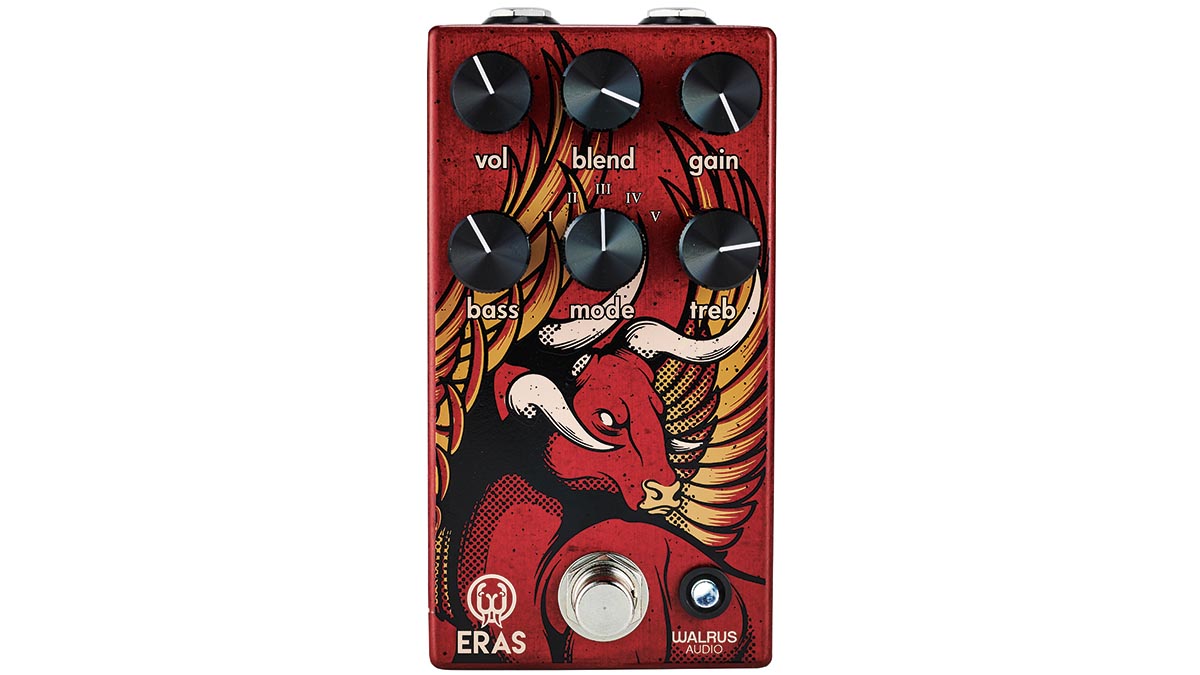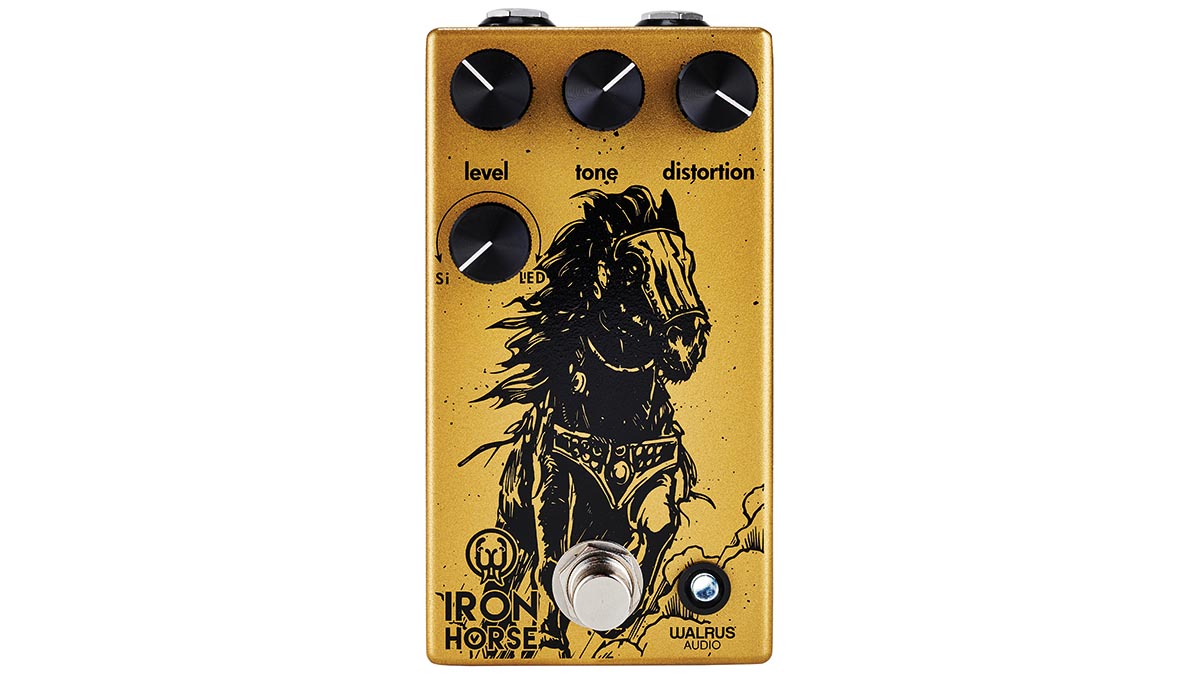Guitar World Verdict
The third-generation Iron Horse improves upon the original with a continuous dial for adjusting clipping, making for a hugely versatile distortion that has that gnarly LM308 Rat tone lurking within. With its five switchable clipping modes, the Eras is similarly tweakable, with a superb onboard EQ.
Pros
- +
The Eras presents a wealth of powerful EQ options.
- +
Both pedals offer a wide range of drive sounds.
- +
Iron Horse does vintage Rat tones with adjustable clipping.
- +
Top-mounted jacks.
- +
Soft-relay switches.
Cons
- -
Nothing.
You can trust Guitar World
Recently introduced by Walrus Audio, these two new US-made distortion pedals are no one-trick ponies, as each provides varying flavours of distortion via clipping from silicon diodes, LEDs or both together.
However, each takes a different route to dialling it in. The Eras features a five-way rotary switch to select LED and silicon-based modes, while the Iron Horse has a rotary knob that morphs from silicon to LED, for a continuous range of blends between the two extremes.
These handmade pedals are nicely put together and run from a standard nine-volt power supply.
Eras Five-State Distortion

The Eras features the same form-factor as the Ages overdrive pedal. You choose one of the five hard-clipping options and then, besides the expected Gain and Volume knobs, there are very effective tone controls, the Treble knob being especially adept in dialling in some especially cutting presence.
There’s a great variety of dirt on offer, from crunchy drive to high-gain metal tones. All the clipping modes have something different in store, the main delineation being between the three Tight modes and the two Rhythm modes, where the scooped mids offer a notably different sonic landscape to the Tight modes’ slight mid-cut.
Overall, there’s plenty here that’s ideal for chuggy rhythms and sustain-y leads. The silicon options sound a little smoother with more compression than the LED, but there’s also the cool complexity of the best-of-both-worlds Tight dual mode where both silicon and LED are in play.
The cherry on the top is the Blend knob, which allows you to mix your dry sound with the distortion for hybrid layered sounds or, more subtly, extra clarity and definition as you roll it back from fully wet.
All the latest guitar news, interviews, lessons, reviews, deals and more, direct to your inbox!
Verdict: Versatility! If you want a distortion pedal with plenty of different flavours, this is the way to go.
Specs
- PRICE: $199 / £179
- ORIGIN: USA
- TYPE: Distortion pedal
- FEATURES: True bypass
- CONTROLS: Volume, Blend, Gain, Bass, Treble, Mode switch, Bypass footswitch
- CONNECTIONS: Standard input,
standard output - POWER: 9V DC adaptor (not supplied)
- DIMENSIONS: 67 (w) x 125 (d) x 57mm (h)
Iron Horse LM308 Distortion

This third iteration of the Iron Horse has had quite a revamp over its predecessors. There’s now more pedalboard-friendly positioning of the socketry and a soft-relay true bypass on/off. The main difference, though, is that where there was a three-way toggle switch you now get continuous morphing from silicon diode to LED clipping.
The pedal offers distortion based around a LM308 chip as found in a Pro Co RAT, and the sonic similarities are immediately apparent; the Tone knob even has that same huge range rolling back from fully bright to dark and woofy.
The gain range is very versatile, taking you from a tonally targeted clean boost right through to full-on distortion. Coordinated adjustment of the Level knob is needed when setting the Si/LED blend – the LED end of things is louder and looser compared with the silicon, which is quieter with more compression and capable of thick saturation that can take off nicely into harmonics.
So you have quite different playing experiences at the two extremes, but it’s in the space between – with a blend of both elements – that you may just find the sweet spot that contributes perfectly to your desired tone.
Verdict: Classic distortion with optimal dialled-in variation – there’s plenty to like here.
Specs
- PRICE: $199 / £179
- ORIGIN: USA
- TYPE: Distortion pedals
- FEATURES: True bypass
- CONTROLS: ERAS: Volume, Blend, Gain, Bass, Treble, Mode switch, Bypass footswitch; IRON HORSE: Level, Tone, Distortion, Si/LED, Bypass footswitch
- CONNECTIONS: Standard input, standard output
- POWER: 9V DC adaptor (not supplied)
- DIMENSIONS: 67 (w) x 125 (d) x 57mm (h)
- CONTACT: Walrus Audio
Trevor Curwen has played guitar for several decades – he's also mimed it on the UK's Top of the Pops. Much of his working life, though, has been spent behind the mixing desk, during which time he has built up a solid collection of the guitars, amps and pedals needed to cover just about any studio session. He writes pedal reviews for Guitarist and has contributed to Total Guitar, MusicRadar and Future Music among others.




